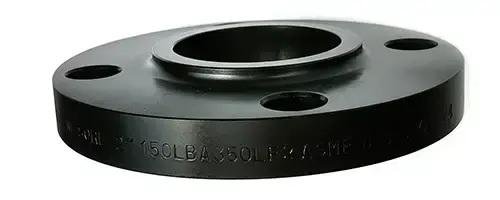-
Новости
- ИССЛЕДОВАТЬ
-
Статьи пользователей
The Future of 3D Printing Technology in Flange Manufacturing

The Future of 3D Printing Technology in Flange Manufacturing
The adoption of 3D printing technology in flange manufacturing has attracted significant attention due to its potential to revolutionize production methods. By offering unique advantages in customization, cost reduction, and design flexibility, 3D printing is shaping the future of industrial flange production. Below, we explore the advantages, limitations, practical applications, and future development potential of this technology.
Advantages of 3D Printing Technology
3D printing offers several advantages for flange manufacturing:
1. Cost-Effectiveness:
The initial investment in 3D printing equipment is relatively low compared to traditional manufacturing setups. This makes it ideal for small and medium-scale production. Furthermore, 3D printing eliminates the need for complex molds, enabling rapid response to market demand and supporting customized flange production.
2. Design Flexibility:
3D printing allows for the creation of flanges with complex geometries that are difficult or impossible to achieve with conventional methods. Intricate designs, internal channels, and integrated features can be produced without additional assembly steps.
3. High Material Utilization and Reduced Waste:
Additive manufacturing uses only the material required for the component, minimizing waste and reducing overall production costs. This feature also supports sustainable manufacturing practices.
Disadvantages of 3D Printing Technology
Despite its benefits, 3D printing has some limitations in flange manufacturing:
1. Material Performance:
Certain 3D printing materials may not meet the high strength, temperature resistance, or corrosion resistance required for extreme operating environments. In such cases, traditional materials may still be preferred.
2. Production Efficiency:
While ideal for small batch or prototype production, 3D printing is generally slower than conventional methods for large-scale manufacturing. Achieving both cost-efficiency and high output remains a challenge.
3. Technology Maturity and Material Diversity:
The technology and available materials are still developing. To meet the full spectrum of flange requirements across industries, further innovation and testing are needed.
Future Development Potential
The future of 3D printing in flange manufacturing is promising, particularly in the areas of customization and rapid prototyping. Emerging technologies such as laser selective melting and new additive methods like binder jetting are improving both precision and efficiency. As materials science advances, 3D printing is expected to play an increasingly important role in high-end manufacturing fields, including aerospace, medical devices, and specialized industrial applications.
Practical Application Cases
1. Aerospace Industry:
Aerospace companies are leveraging 3D printing to produce lightweight, high-performance flanges for aircraft. For instance, Boeing has successfully implemented 3D printing to manufacture flanges for wing connection parts, reducing structural weight, improving material utilization, and accelerating production timelines.
2. Medical Devices:
The medical industry is exploring 3D-printed flanges for personalized surgical guides and medical equipment. Customized flanges allow surgeons to operate with greater precision, improving patient safety and reducing procedural complexity.
3. Automotive Manufacturing:
In the automotive sector, 3D printing is used to produce custom or low-volume flanges for specialized models. This approach allows rapid design adjustments, shorter development cycles, and improved performance of complex components.
4. Construction Industry:
3D-printed flanges are being applied in building components and connectors, particularly in projects using 3D printing construction robots. These flanges enable the rapid assembly of complex structures, reduce material waste, and improve construction efficiency.
5. Industrial Equipment:
Industrial automation and fluid transfer systems benefit from 3D-printed flanges that meet specific design requirements. Manufacturers can produce complex connection flanges quickly, optimizing equipment performance and reducing assembly time.
Conclusion
The integration of 3D printing technology into flange manufacturing represents a transformative development. While challenges such as material limitations and production efficiency remain, the benefits of design flexibility, customization, and cost-effectiveness are significant. Practical applications across aerospace, medical devices, automotive, construction, and industrial equipment highlight the technology’s potential to revolutionize traditional manufacturing.
As technology continues to evolve, 3D printing is expected to achieve broader adoption, supporting innovation and efficiency in flange production across diverse industries.
It's important to know about Google SEO to help your website rank higher in search results.





